Screw-in tire is one situation you may encounter when driving. It is a cause of panic to many as it means you are at the risk of a flat tire if not deflated already. How do you deal with a screw-on your car wheels? This is a question you may have if you find yourself in this puzzle.
Before looking at the solutions, a thing to know is that a screw puncture differs from a nail puncture. In the case of puncturing by nail, you can easily pull it away as it is regular. The screw, on the other hand, is irregular and needs you to been on its removal due to its toothed structure. In this article, we will guide you on how to pull screws in tire repair.
The screw can get in your tire in various ways, though many think it is an act of sabotage. While it may be a probable cause, you should also factor in the environment your drive in to get to the root of the problem.
Here are some of the ways that a screw can make its way into your tire.
The most common way of getting screws in your tire is by driving over them. A thing that you will realize with the screw-on tire issue is that it mostly affects the rear wheels. In this situation, a screw will mostly lie vertically on the ground. When the front wheels pass over the screw, they flip them over by the head, leaving them erect, and the rear wheels go over them. Smaller screws are easy to get into tires due to their center of gravity, which allows them to stand vertically on the road. With small screws in the tire, the situation is not as dire as they do not cause much damage. The thickness of the tread may prevent the small screws from causing much damage.
You may also drive over screws in puddles on the road. It is hard to determine if there are any obstacles as they are beneath the water in such a scenario. The water disturbance in the puddle may cause the screws to raise or point at an angle where they can easily penetrate the tire.
Screws in wooden planks are also a risk to your tires. The plank gives them the stability to stay upright. When you drive over the planks, the screws penetrate your wheels, and the wood may easily disintegrate due to the vehicle’s weight. With the screw exposed, it may dig further into your tires.
Sometimes you may find screws in your tires, and the first thing that clicks is someone sabotaging you. At times, it may be the case, and the person responsible may either drive the screw in or place it in a vantage place where you will drive over it. If you suspect you are at the risk of sabotage, you should always look under around the tires before driving off. You can also perform a sweeping act with your feet around the wheels to ensure you are not at risk.
What happens if you have a screw in a tire? A deflated tire is the number one expectation. The screw may act as a plug and hold the pressure enough for some distance. However, you may notice that there is a hitch with the wheels. The symptoms may come in the form of a rough driving experience or car imbalance due to low pressure on the wheels.
However, you may notice that there is a hitch with the wheels. The symptoms may come in the form of a rough driving experience or car imbalance due to low pressure on the wheels.
When you spot a screw in your tire, you need to rectify the issue immediately before it goes overboard. Can I drive with a screw-in tire? Yes, you can drive with the screw on your wheel, but you should not make such a move unless you are desperate or going to repair the damage on your next stop. A spare tire comes in handy on such occasions as it will give you room for the needed attention.
Driving with a screw-on your tire is very risky as you may cause extensive damage to it. If the screw penetrates deeper into the tire, you may notice that the driving experience being quite rough, especially when on bumpy roads.
If it is a small screw, you can easily pull it out. Check your tools box to see if you have the right tools to pull out the screw. A pair of pliers can do the trick. However, you should understand that pulling out the screw is a gamble as you cannot be 100% sure of its length.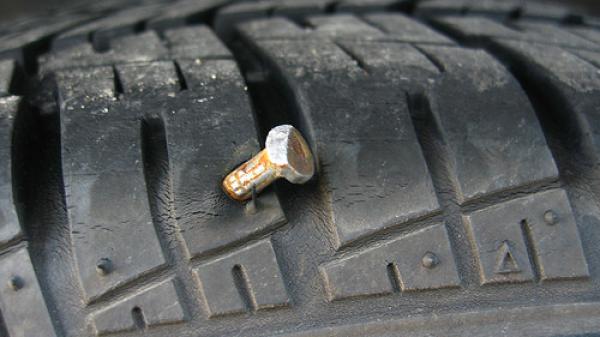 The best move to pull is to go to a mechanic who will remove the screw and patch up the hole.
The best move to pull is to go to a mechanic who will remove the screw and patch up the hole.
Another essential thing to keep in mind is the location of the damage. If you have the screw in the middle of the tire along with the treads, a tire patch can solve it. However, if the screw is on the sides or shoulder of the tire, replacement is the only viable option.
Why can’t you patch a tire shoulder? If you have a screw on the tire shoulder, patching is not an option as it may blow due to the car’s weight. The weight leads the tires to bulge outwards and force out the plug. If you are driving, it can be catastrophic.
In short, a screw-in tire between treads is repairable, but if on the sides, you replace the tire.
Ans: Yes, you can repair a tire with a screw in it, depending on the location of the damage.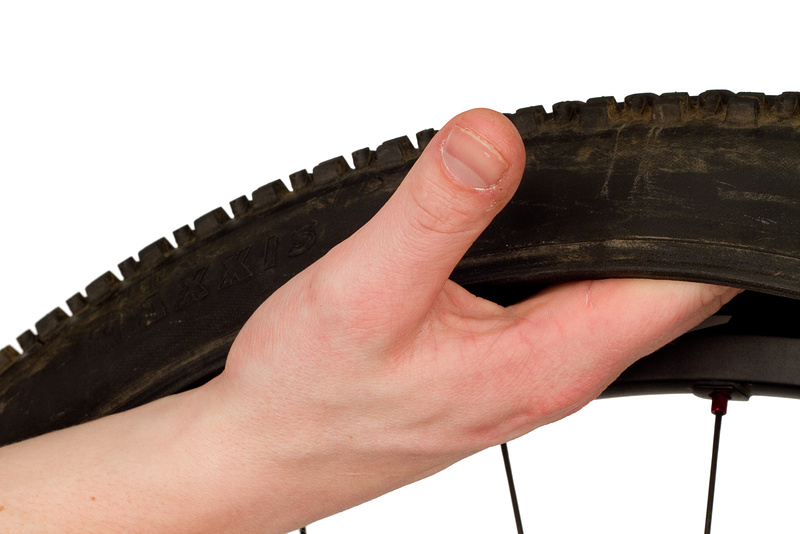 If the damage is on the tread, you can patch it up. However, if it is on the side, you will notice that your preferred tire shop won’t repair tire. The problem is hazardous, and the solution you have is to get a new tire.
If the damage is on the tread, you can patch it up. However, if it is on the side, you will notice that your preferred tire shop won’t repair tire. The problem is hazardous, and the solution you have is to get a new tire.
Ans: Averagely, fixing a tire with a screw in it will cost you between $10 and $20. The price depends on the garage, as some may be high. The cost may be higher if you want additional services like wheel alignment.
Ans: The distance you can move with a screw in your tire depends on how deep-set it is in the tire. If it is a long nail, you may drive for around 10-miles to notice that you have a looming issue. When you discover the problem, sort it out immediately for the best experience on the road. A small screw does not pose much risk, with some falling off. However, if you notice it, you should remove it immediately to be on the safe side.
Ans: If you find a screw in your tire, you have to contact a professional to remove it. You can drive to a garage for inspection to check on the extent of the damage and have the necessary repairs. Never pull the screw from the tire if you do not know what you have in your hands. You may pull it off in the wrong way and cause more damage to the tire.
Ans: A screw-in tire is very dangerous as it can cause secondary issues like rough driving, deflated tires, and tire imbalance. If the screw is on the tire shoulder, it means the tire is no longer worthy of the road, and you need a replacement.
Ans: If you notice a screw in your tire, you should not pull it out, mainly if it is on the sides. If you see it, go to a mechanic and let them deal with the situation professionally. If you have the right skills and a puncture repair kit, you can try to sort the issue.
Ans: You may need a new tire if the nail penetrates the tire shoulder. If the issue is on the treads, it is relatively manageable as you can easily patch it up. In other instances, if the nail has been in the tire for a long time, you may also need a replacement, especially if there is extensive damage.
Are you dealing with screw-on tires? If the answer is affirmative, then this article is an ultimate asset that will give you an in-depth understanding of this issue. If you have this issue, do some inspection to know where the problem lies. As a summary, you can make repairs if the screw is on the tread area, but you will need a replacement if on the sidewall. A solution on how to plug a tire sidewall is temporary, requiring you to replace the tire for a fulfilling driving experience.
Read More:
When you have a screw in your tire, it can be a real pain to get it fixed. You may not know what to do, or where to go.
You may not know what to do, or where to go.
In this blog post, we’ll discuss what you should do if you have a screw in your tire. We will also provide information on where you can go to get your tire fixed.
When you have a screw in your tire, the first thing you should do is pull out the screw with a pair of pliers. Then, use a tire repair kit to thread a piece of tire string into the hole, and get it sealed.
To repair your tire, you will need a tire replacement kit found in the back of your car, as well as a puncture repair kit. The following table shows you all the tools you’ll need for the job.
Once you have all of the necessary tools and supplies, you can begin repairing your tire. Here are the steps:
It is not safe to drive with a screw in your tire. The screw can cause the tire to leak air. This can lead to a blowout, which can be very dangerous. If you must drive with a screw in your tire, make sure to keep an eye on the pressure and stop as soon as possible to have the tire repaired.
A screw can damage a tire in several ways. First, the screw can cause the tire to leak air. This can lead to a blowout, which can be very dangerous.
First, the screw can cause the tire to leak air. This can lead to a blowout, which can be very dangerous.
Second, the screw can become lodged in the tread of the tire. This can cause uneven wear and may eventually lead to a blowout.
Third, the screw can damage the sidewall of the tire. This can cause the tire to leak air or may eventually lead to a blowout. All of these scenarios are dangerous and should be avoided.
In case the tire is damaged beyond repair, you will need to replace it. If the damage is minor, you can have the tire repaired. A qualified mechanic will be able to tell you if your tire needs to be replaced or repaired.
But if the screw is on the side of the tire, it can be repaired using a patch, and if the screw is in the tread, it will need to be plugged.
Tire sealants are a quick and easy way to fix a punctured tire. They work by sealing the hole in the tire. This prevents air from escaping and keeps the tire inflated. You can purchase tire sealants at most auto parts stores.
You can purchase tire sealants at most auto parts stores.
To use a tire sealant, simply follow the instructions on the bottle. Most tire sealants will require you to remove the valve stem from the tire. Once the sealant is in the tire, replace the valve stem and inflate the tire. The tire sealant will work its way into the hole and seal it.
It is important to note that tire sealants are a temporary fix. They are not meant to be used as a permanent solution. You should take your car to a qualified mechanic as soon as possible to have the tire repaired or replaced.
Most punctures can be repaired, but there are some that cannot. If the puncture is in the sidewall of the tire, it cannot be repaired. If the puncture is in the tread and is less than ¼ inch, it can be repaired. Any puncture larger than ¼ inch will require a new tire.
Punctures in the sidewall of the tire cannot be repaired while those in the tread of the tire that is less than ¼ inch can be repaired.
It only takes a screw that is ¼ inch long to puncture a tire. This is why it is so important to be diligent about checking your tires for any objects that may be lodged in them.
In case you have a choice, always opt for patching the tire over plugging it. Patching the tire will create a stronger seal and is less likely to cause further damage.
However, not all punctures can be patched so if the puncture is in the sidewall of the tire, you will need to choose another option.
Yes, plugs are safe for tires. They have been used to repair punctured tires for many years. However, they are not meant to be a permanent fix. You should take your car to a qualified mechanic as soon as possible after plugging your tire.
Yes, a plugged tire can blowout. This is why it is so important to keep an eye on the pressure of your tires after you have had one repaired.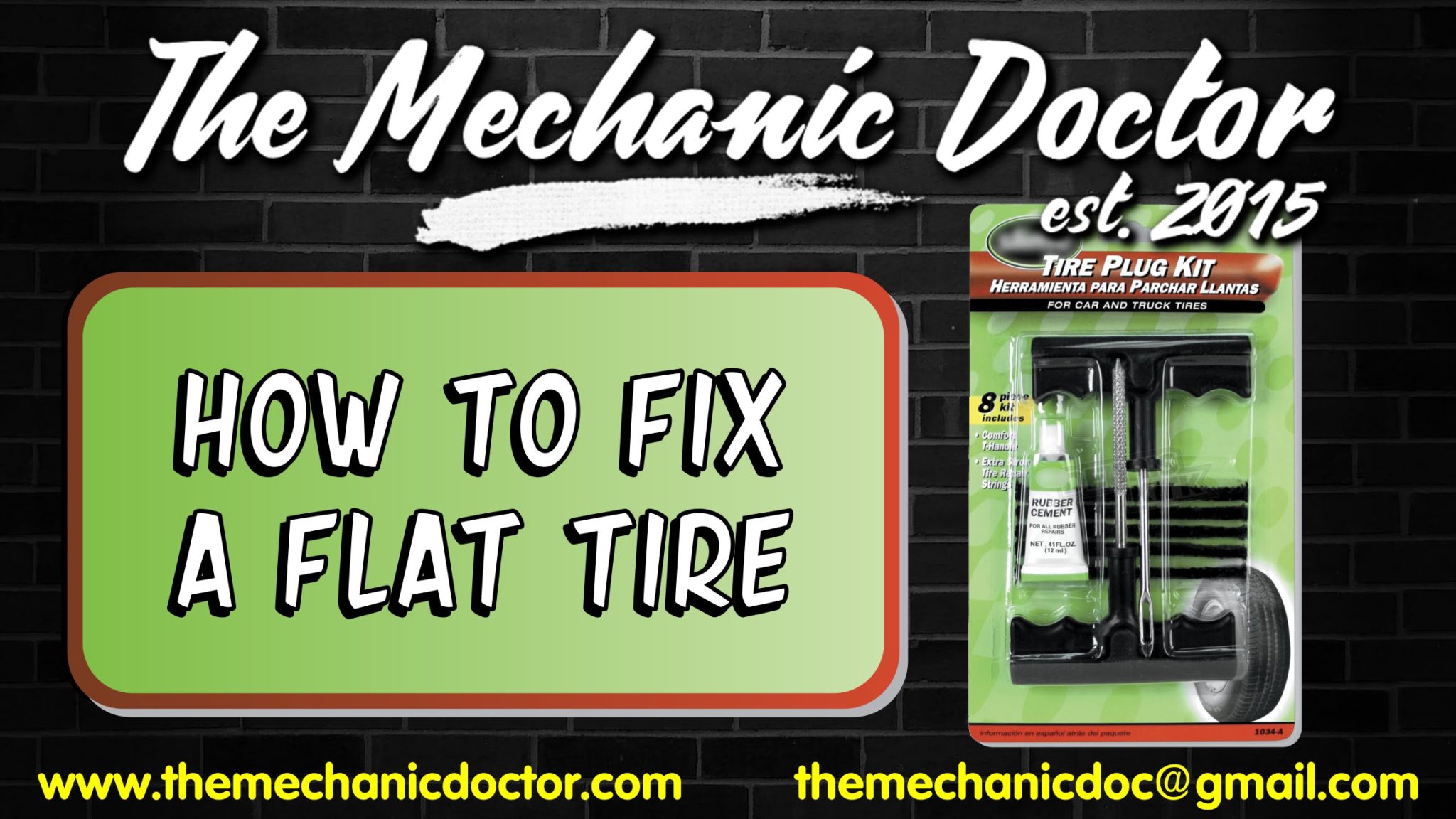 If you notice the pressure starting to drop, pull over and call for help.
If you notice the pressure starting to drop, pull over and call for help.
The cost to repair a tire with a screw in it will depend on the extent of the damage. If the puncture is in the sidewall, the tire will need to be replaced. If the puncture is in the tread and is less than ¼ inch, it can be repaired.
The cost of repairing a tire will vary depending on the type of tire and the location of the puncture. You can expect to pay between $30 and $60 to have a tire repaired.
As you can see, there are two different ways that you can fix a screw in your tire. You can either remove the screw and take the tire to a qualified mechanic, or you can plug the tire.
Both of these methods are effective and will allow you to continue on your way. If you have any questions or concerns, feel free to contact a qualified mechanic. They will be able to help you choose the best option for your situation.
Here are some more articles for you to check out:
What Causes A Bubble In A Tire?
Why Do Tires Blow Out?
What Does the T or H Mean on Tires?
Author: Kirill Savchenko
“Chief, you've got ten minutes of work to do, the hole is nothing! Well, come up with something ... ”Every tire fitter has probably heard such words. Alas, not all tire damage can be repaired ...
But the situation can be reversed. A wheel pierced by protruding reinforcement may be repairable, while a small cut will write off the tire for scrap.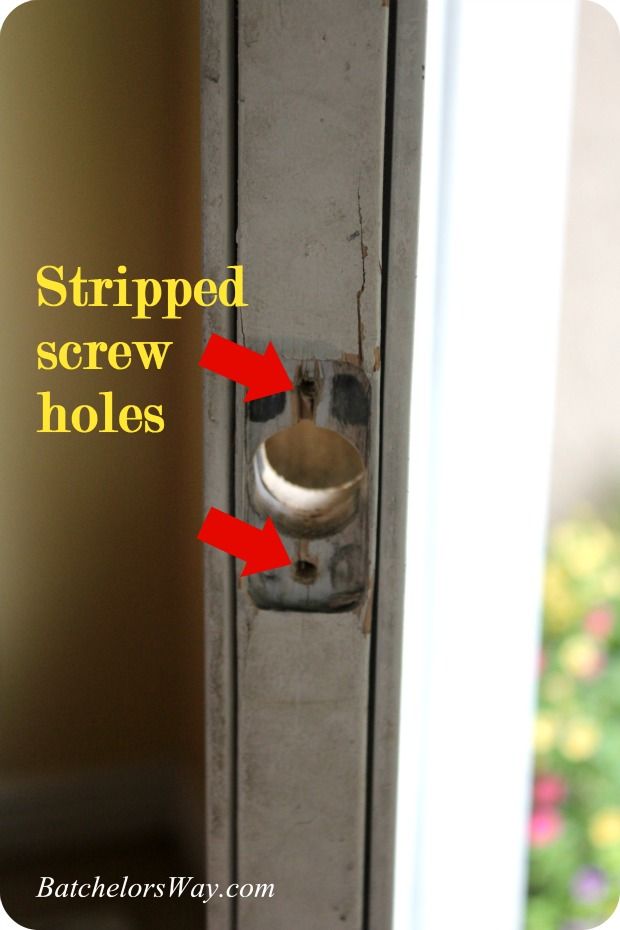 Experienced tire fitters believe that it all depends on the point of damage and the object that caused it.
Experienced tire fitters believe that it all depends on the point of damage and the object that caused it.
Most often, drivers encounter punctures in the tread area of a tire. It is not always possible to detect it immediately. If in the days of tires and chambers the wheel lost pressure at the slightest puncture, then tubeless tires are much more reliable in this regard. A nail or self-tapping screw usually closes the puncture site, preventing air from escaping quickly.
With such a "plug" you can sometimes drive for months. The tire can lose pressure minimally without arousing suspicion. At the same time, an attempt to pull out a noticed nail on the way is likely to turn into a problem. In this case, the only recommendation is to pull out a foreign object only in a tire shop and repair the wheel.
In most cases, tread punctures are sealed either with special harnesses (some for temporary use, some for permanent use) or patches from the inside of the tire.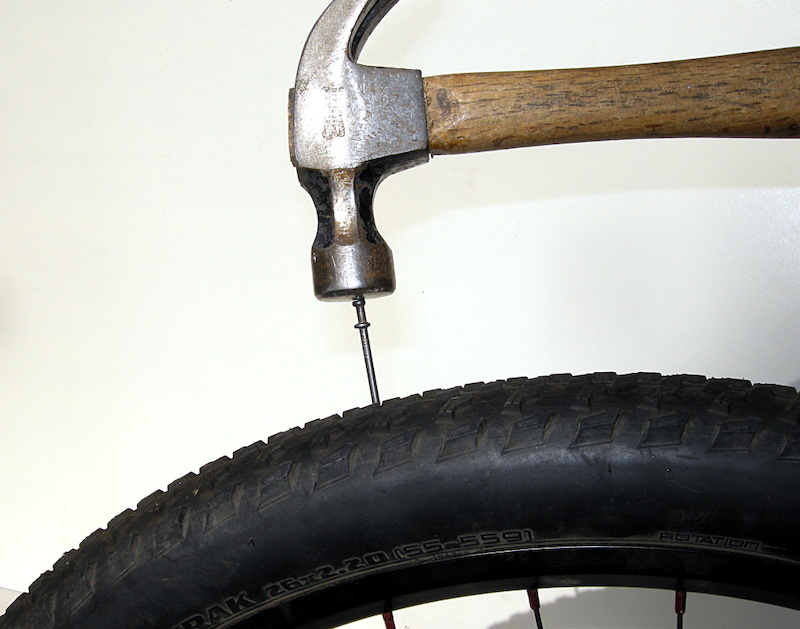 Even damage caused by massive pins can be repaired. The main thing is that a piece of the tire along with the cord is not torn out.
Even damage caused by massive pins can be repaired. The main thing is that a piece of the tire along with the cord is not torn out.
In the latter case, the hole is filled with raw rubber, vulcanized, and a special cord patch is placed on the inside. But this will only be a temporary measure. In addition, such repairs are not cheap, and purchasing a new tire can be both more profitable and safer.
In addition to the plaster, cord “fungi” are also used. Lubricated with glue, the “fungus” is inserted into the puncture from the inside of the tire, then the excess part of the “leg” is cut off from the outside.
On the other hand, a cord patch can seriously help with side cuts. And car owners meet with them quite often. But here there are several nuances. In a roadside tire shop, the cut will most likely not heal. You need to contact a company with specialized equipment, primarily vulcanization.
And one vulcanizer is not enough here. Cord patches should be with a certain number of layers, designed for strictly defined damage sites and of a suitable size.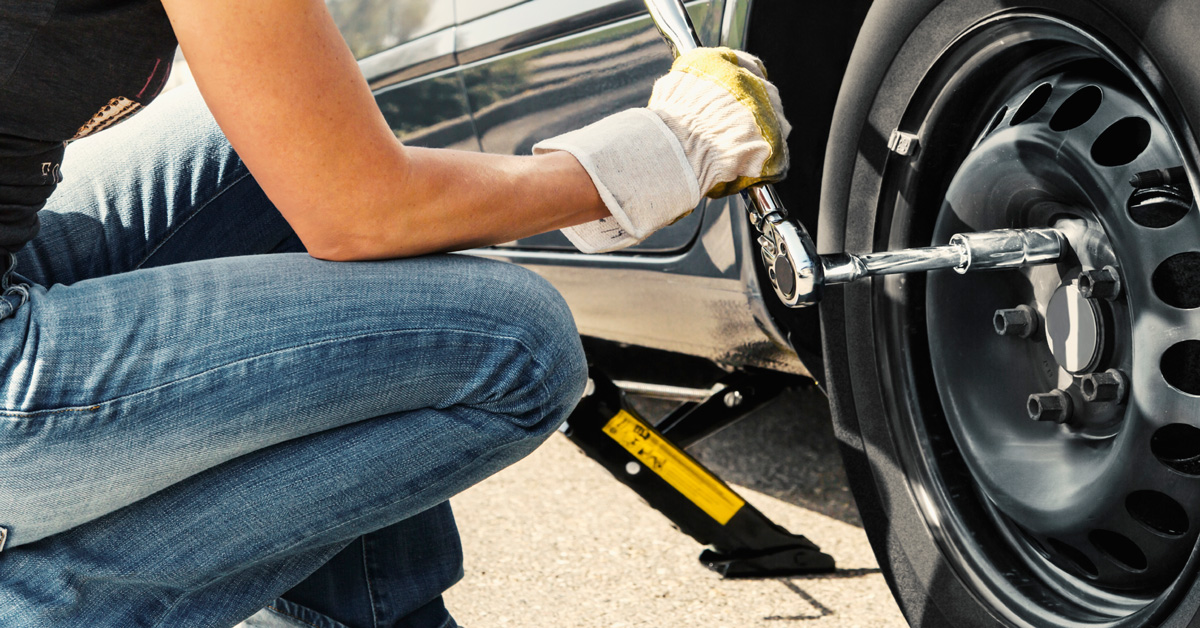 And again we are talking about the nuances.
And again we are talking about the nuances.
If the cut is in the shoulder area of the tire, then it is often impossible to repair it properly. The tire fitter who offered such a service is at great risk, even if he claims that he will weave a piece of new cord with his hands and vulcanize it. There are no miracles in this situation, but in any case, the last word belongs to an experienced specialist.
Low-profile tires with a tread height of less than 50% of the width are difficult to heal side cuts. That is why, in the case of using a car on roads with a possibility of tire damage, it is better to put those that are higher. They are much easier and cheaper to repair.
By the way, what appears to be a cut at first glance may not be one. If the sidewall of the wheel catches on something sharp, and a tear forms on the tire without damaging the cord, then this is called a pinch. It does not carry momentary danger and does not require any complex repairs.
However, if a piece of rubber remains, then it is glued with ordinary superglue. If not, you will need raw rubber and a vulcanizer. It is impossible to leave the cord bare: under the influence of moisture, it can collapse, which will lead to the complete loss of the tire.
If not, you will need raw rubber and a vulcanizer. It is impossible to leave the cord bare: under the influence of moisture, it can collapse, which will lead to the complete loss of the tire.
One of the most common and fatal tire defects is swelling or simply "herniation". Despite the absence of open damage to the rubber, such a wheel will be scrapped ahead of schedule. The fact is that when the sidewall is hit, the threads of the tire carcass break. Even if the swelling is very small, sooner or later the bump grows in size, and this is already fraught with an explosion of the wheel at speed.
However, some hernias can be repaired, but this is again a temporary measure. Masters can put cord patches even in the tread area. But only on condition that the distance from the sidewall to the swelling is more than 40 mm. If less, the tire is not subject to further operation. By the way, on low-profile tires, hernias, for the most part, are not repairable - both on the tread and on the sidewalls.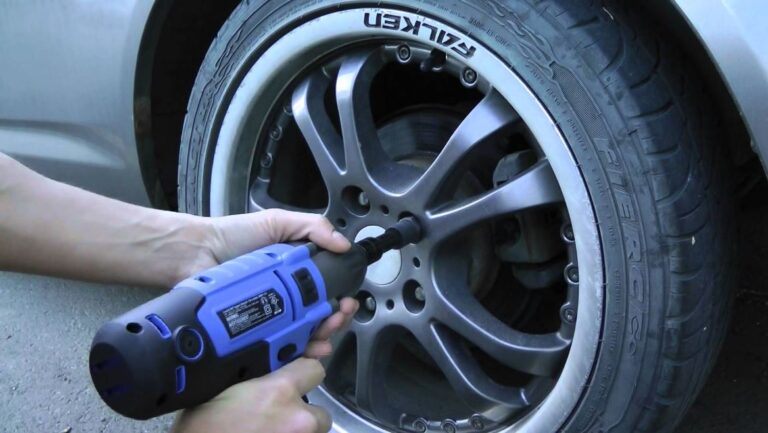
One of the major tire problems is caused by unprofessional repairs. Moreover, the owner most often does not know about it. We are talking about damage to the bead ring, as a result of which the tire does not initially hold the specified pressure.
Eventually the bead ring begins to push out of the rim. At high speed or under heavy load, such a wheel can be disassembled, which again threatens the car with a loss of control.
This damage can be repaired provided that the wire ring or base is not damaged. Special technologies for such repairs are not provided, but experienced craftsmen use the so-called "cold" or chemical vulcanization using a two-component sealant. The resulting mass covers places where there is no rubber on the bead ring. The main condition is to wait three days before mounting the tire on the disc.
As for Run Flat tires, according to the instructions of most manufacturers, they are not subject to repair. In extreme cases, you can use a bottle of special pressurized sealant that comes as a repair kit.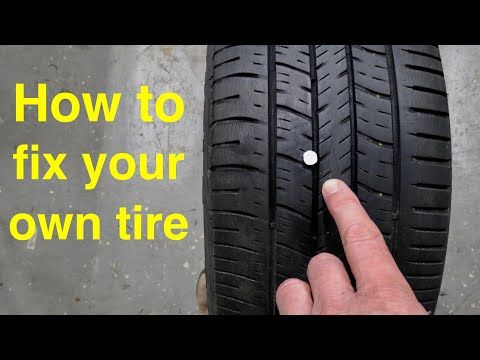
Comment of the expert of the company "SHINSERVICE":
Alexander Golubev
expert "SHINSERVICE"
First of all, we recall that most tire manufacturers do not recognize handicraft tire repair. It is considered a sign of external influence and changes in the design of the tire. Such a tire automatically voids the warranty. This does not happen if tire repairs are carried out in specialized, authorized tire brands services. Note that almost all major tire brands give their own extended warranty, according to which in most cases the repair is free, at a discount, or the product is generally replaced with a similar one, depending on the conditions of the program.
Based on our experience, we can note that in most cases damage in the bead area and in the shoulder area is not repairable.
I would also like to draw attention to the fact that most low-profile tires have high speed indexes (V and above), and even after professional repair they will not be able to be used in the previous modes without restrictions. Therefore, we strongly recommend changing the tire in all cases, except for tread punctures.
Therefore, we strongly recommend changing the tire in all cases, except for tread punctures.
practice tires and wheels
Articles / New cars So that's what you are, Moskvich 3: getting acquainted with the car at the official start of production Yesterday, November 23, the Moscow Automobile Plant, which for a long time existed only in the status of a Renault Russia enterprise (until 2014 it was called Avtoframos) and stood idle for more than six months after the... 5049ten 3 11/24/2022
Articles / Practice What are universal, repair and sports catalysts and is it worth installing them Among the many promotional offers for removing the catalyst, there are others: in them, motorists are offered not a simple removal of the catalyst, but its replacement with a universal, repair one . .. 1146 0 2 11/23/2022
.. 1146 0 2 11/23/2022
Articles / Practice Do I need to warm up the car before driving in winter: we understand in detail In my personal rating of debatable and provocative topics, the articles “how to warm up a car in winter” take an honorable first place in terms of the number of absurdities, mistakes and other shortcomings. T... 3181 one eleven 11/22/2022
Test drives / Test drive Haval Dargo vs Mitsubishi Outlander: the dog is barking, the stranger is coming In the Haval dealership in the south of Moscow, life is in full swing: buyers look at cars, communicate with managers and sign some papers. While I was waiting for the test Dargo, the same cross... 17440 7 205 13.09.2022
While I was waiting for the test Dargo, the same cross... 17440 7 205 13.09.2022
Test drives / Test drive Motor from Mercedes, emblem from Renault, assembly from Dacia: test drive of the European Logan 1.0 It would seem that what's new can be told about the second generation Renault Logan, known to every Russian taxi driver, as they say, up and down? However, this car has... 14065 ten 41 08/13/2022
Test drives / Test drive Geely Coolray vs Haval Jolion: Free Cheese? If! Do you want to buy a car today with a full warranty, on credit at an adequate rate, without wild dealer markups? Now this is still a task, because a full-fledged chain of "representation - s. .. 11174 26 thirty 08/10/2022
.. 11174 26 thirty 08/10/2022
adv.rbc.ru
adv.rbc.ru
adv.rbc.ru
Autonews
TV channel
Pro
Investments
Events
+
New economy
Trends
Real estate
Sport
Style
National projects
City
Crypto
Debating Club
Research
Credit ratings
Franchises
Newspaper
Special projects St.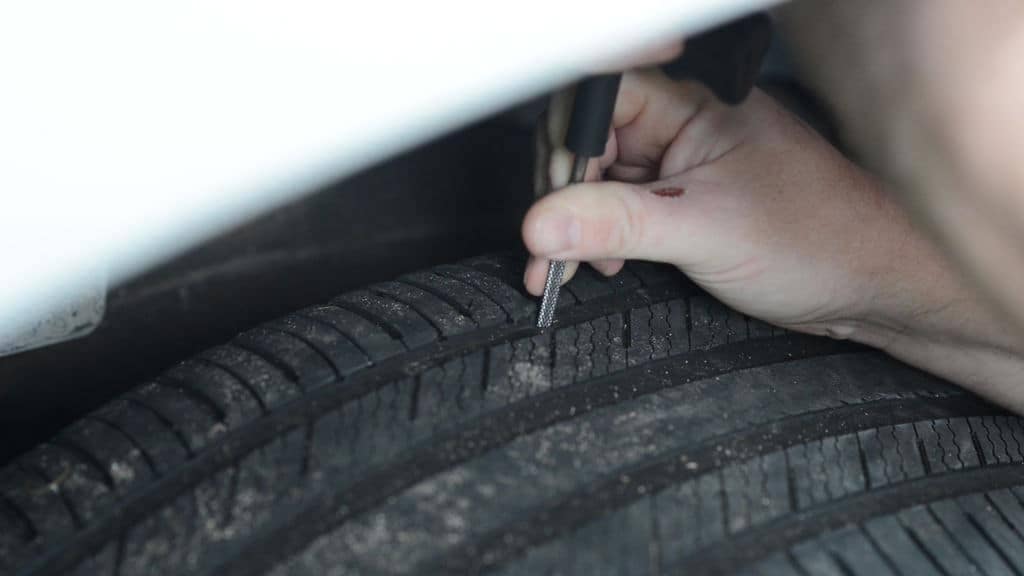 Petersburg
Petersburg
Conferences St. Petersburg
Special projects
Checking counterparties
Library
Podcasts
ESG index
Politics
Economy
Business
Technology and media
Finance
RBC CompanyRBC Life
adv.rbc.ru
Photo: Mikhail Tereshchenko / TASS
adv.rbc.ru
See also
Nail, rebar or sharp stone - sometimes you can damage a tire almost from scratch. First of all, the scale of damage is important, and often rubber can still be repaired. Most often, motorists turn to tire shops for repairs in the middle of autumn or spring - just in the season of replacing summer tires with winter tires and vice versa. In order not to stand in lines, it is worth knowing exactly when to go to the tire shop and when to go to the store.
Most often, motorists turn to tire shops for repairs in the middle of autumn or spring - just in the season of replacing summer tires with winter tires and vice versa. In order not to stand in lines, it is worth knowing exactly when to go to the tire shop and when to go to the store.
The most common "injury" to rubber is a puncture, and it can most often be repaired. Professionals in the nearest service will do it much faster, and your hands will remain clean. But if the puncture caught you in a deserted place, and there is a pump and a tire repair kit with harnesses in the trunk, you can patch up the tire yourself. Most often, when repairing the front tires, the wheel can not even be removed, it is enough to turn the steering wheel in the right direction and find the puncture site.
First, the hole is cleaned with a helical awl, the repair harness is smeared with glue and tucked into the eye of the awl, after which it is inserted into the tire hole. With a sharp movement, the tool is removed, and the tourniquet remains inside and securely clogs the hole. The tails are cut with a knife, but it is recommended to leave about 20 mm. After that, the tire can be inflated and the pressure checked.
The tails are cut with a knife, but it is recommended to leave about 20 mm. After that, the tire can be inflated and the pressure checked.
Repair with tourniquets is not considered long-term, because after some time they dry out and begin to let air through. A more advanced puncture repair method is vulcanization. The hole is sealed with an elastic patch, and the funnel at the puncture site is filled with a special compound. A vulcanizer is put on top, which heats the patch and solders the excess.
Under service conditions, the puncture is also repaired with cord fungus. The puncture site is processed and drilled to roughen. Everything is smeared with glue, after which a fungus is introduced from the inside of the tire, its cap is rolled, and the excess legs are cut off from the outside.
Photo: PA Images / TASS
A puncture can also be repaired with sealant. Many car manufacturers with run flat tubeless tires put compressor repair kits in the car instead of a spare tire - a bottle of pressurized sealant. The car is raised on a jack, after which the sealant is pumped into the damaged wheel through the nipple. Next, you need to spin the wheel and pump it up. After repair, the car should be driven a couple of hundred meters to check the tightness of the tire. If it has not recovered, the procedure is repeated.
The car is raised on a jack, after which the sealant is pumped into the damaged wheel through the nipple. Next, you need to spin the wheel and pump it up. After repair, the car should be driven a couple of hundred meters to check the tightness of the tire. If it has not recovered, the procedure is repeated.
It happens that a self-tapping screw or a nail closes the hole in the tire, remaining inside. Do not rush to pull it out - until the pressure drops, you can safely get to the service for vulcanization. Sometimes the wheel begins to blow off a few weeks after the self-tapping screw got into it. Therefore, it is better to check tire pressure periodically, and if the pressure sensor lights up, you should at least visually inspect the tire for a nail head.
A bump or bulge most often occurs on the side of a tire after hitting an obstacle or hitting a hole at speed. From the impact, the sidewall carcass threads are damaged, the tire ceases to hold the load and pressure, swelling appears. Any small bump eventually turns into a larger one, and with such a defect, the wheel can burst at any time. This is a direct safety hazard because a sudden flat tire can cause loss of control and a road accident.
Any small bump eventually turns into a larger one, and with such a defect, the wheel can burst at any time. This is a direct safety hazard because a sudden flat tire can cause loss of control and a road accident.
Some bulges can be repaired, but no patch will ever restore a tire to factory stiffness. The ideal option in this case is to replace the tire. If a hernia has appeared on the tread, then you can extend the life of the tire with the help of cord patches - ready-to-use patches with an adhesive layer. But if swelling is found on the sidewall, the likelihood of repair is minimal, the wheel is easier to change. Blisters on low profile tires are generally not repairable.
Only car service professionals can repair a side cut. Cord patches will be needed to repair the damage, but after some time the wheel will still have to be changed. This method will work only if the gap is not in the shoulder area of the tire, then no one will repair it.
In general, cuts or punctures, unlike punctures, are considered non-repairable, since the integrity of the frame is violated. And breakdowns do occur on the go, when the tire abruptly loses pressure and has time to make only a few turns “on the rims” before it comes to a complete stop. In this situation, the cord breaks and the layers of the tire are destroyed. Even if it is possible to close the hole, it is not recommended to use such a weakened tire.
And breakdowns do occur on the go, when the tire abruptly loses pressure and has time to make only a few turns “on the rims” before it comes to a complete stop. In this situation, the cord breaks and the layers of the tire are destroyed. Even if it is possible to close the hole, it is not recommended to use such a weakened tire.
Photo: Mikhail Pletsky / Russian Look
Cracks, sidewall abrasions and unprofessional tire fitting can also lead to tire problems. Cracks can occur as a result of improper storage of tires. Their danger is that moisture begins to flow to the cord, and this already renders the frame unusable. Air can also escape through cracks. Cracks cannot be repaired and tires will not last long. A tire with cracks is deformed, blistered, and may even break while driving.
Rubbing against curbs or driving on uneven roadsides can damage the tire sidewall. When driving like this, it is worth inspecting the tires for damage regularly. If a slight wear is found, the wheels can be swapped, which will slightly extend their service life and allow you to delay the purchase of new ones.